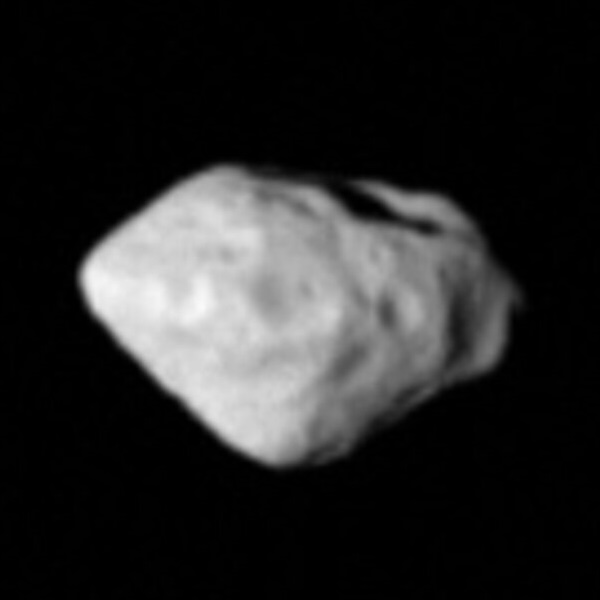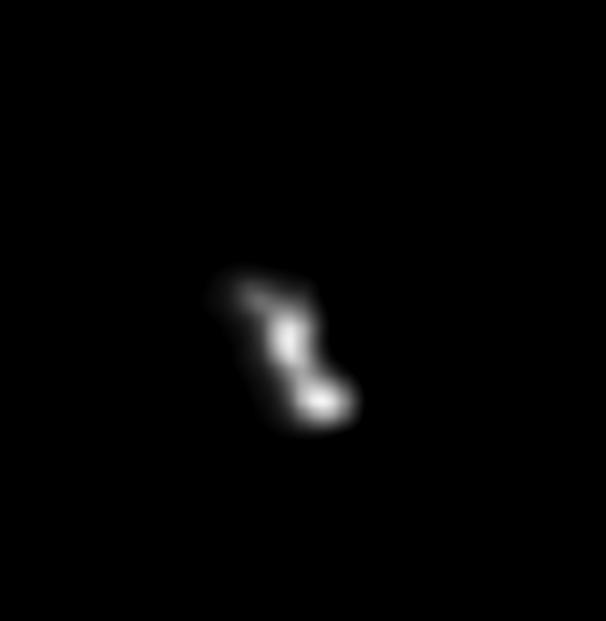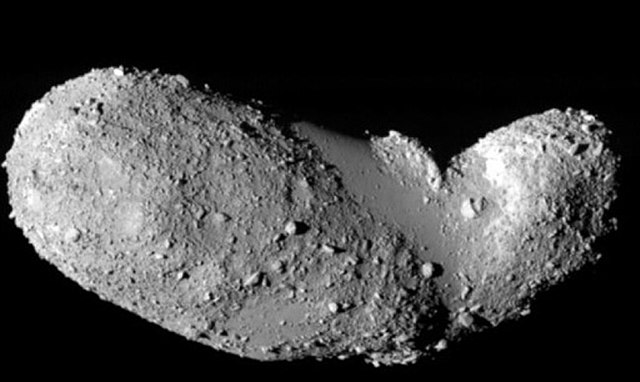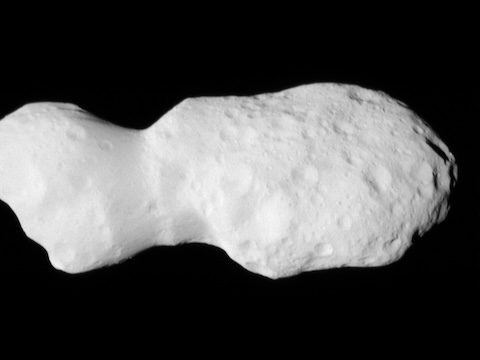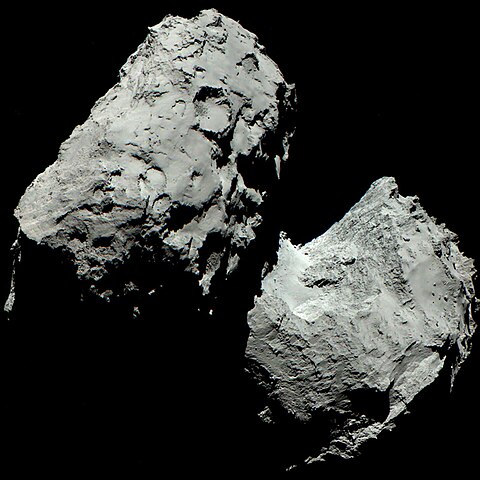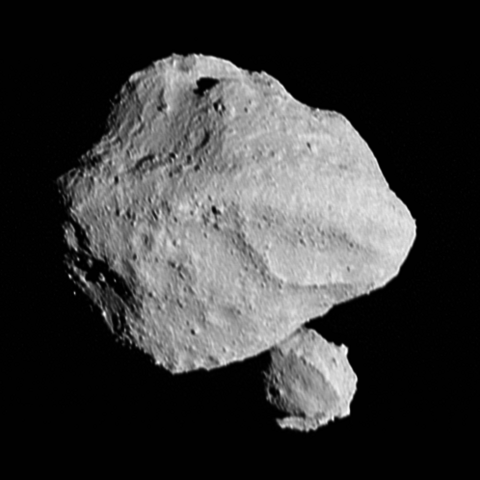1 day / second
0.5 AU
5535 Annefrank
Asteroid
A small main-belt asteroid discovered in 1942 and named after Anne Frank, which was briefly photographed by NASA's Stardust spacecraft during a 2002 flyby.
Key Facts
orbital regime | Asteroid Belt |
learn more | Wikipedia |
mass | 8.5605e+14 kg |
radius | 4.34 km |
hill radius | 1,622.907 km |
semi-major axis | 2.212 AU |
eccentricity | 0.063 |
inclination | 4.247º |
longitude of the ascending node | 120.64º |
argument of periapsis | 9.135º |
orbital period | 3.291 years |
discovery date | March 23, 1942 |
discovered by | Karl Wilhelm Reinmuth at Landessternwarte Heidelberg-Königstuhl |
name origins | Named after Anne Frank, the famous Holocaust diarist |
dimensions | 4.8 km diameter |
albedo | 0.24 |
Spacecraft Visits
Stardust
Flyby
Launched in 1999, visited in 2002
Stardust conducted a brief flyby of the asteroid Annefrank on November 2, 2002, passing within 3,300 kilometers of its surface and capturing images that revealed its irregular, cratered shape measuring about 6.6 × 5.0 × 3.4 kilometers.


